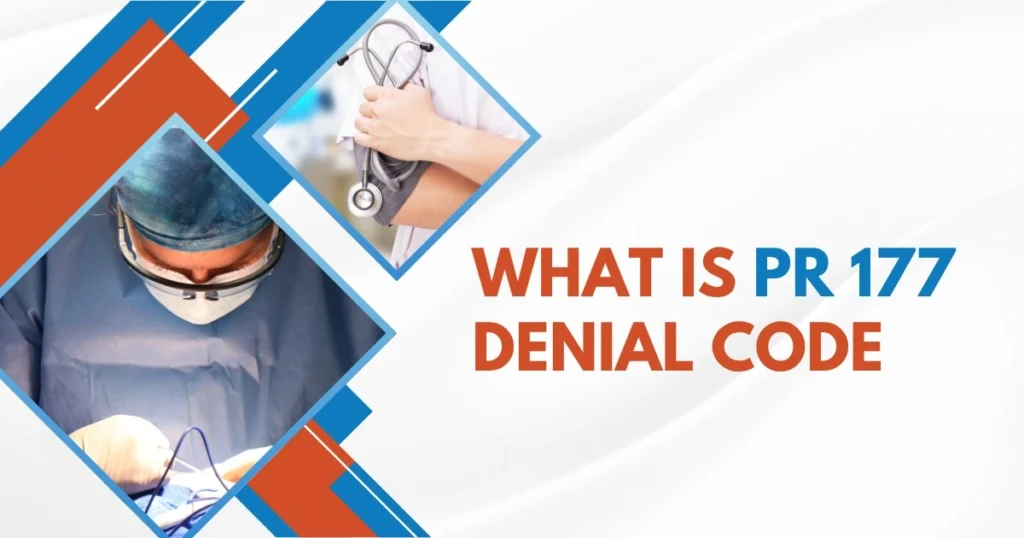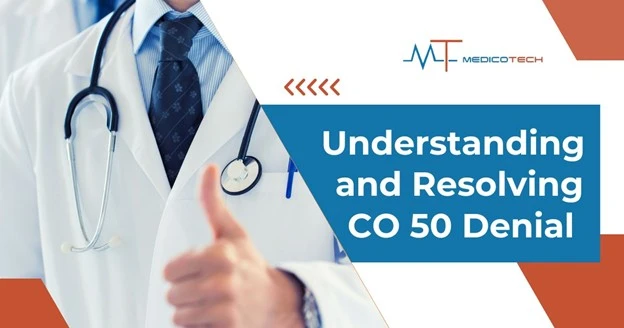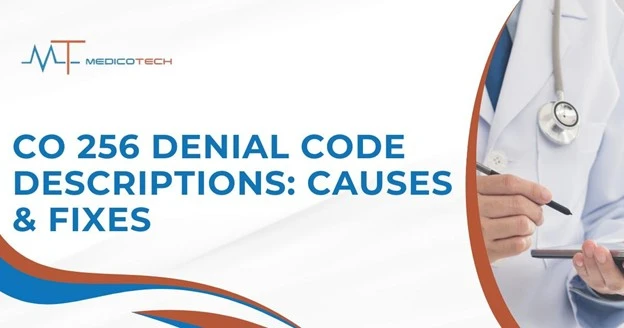The denial code PR 177 is frequently used in medical billing and involes the claim being rejected because eligibility has not been met. Medical personnel and billers should be familiar with this denial code, as it clearly affects settlements. In this post, we will look at what the PR 177 code is all about, why it comes about and finally how to fix it in a quick manner.
What is PR 177 Denial Code?
Denial code PR 177 is used by the insurance company to show that the patient did not meet specific criteria for the payable cover. This might include exclusions based on insurance, certain diagnoses or criteria that need to be met before services are paid for.
PR 177 is telling us that we do not know if the patient actually qualifies for this service being submitted and will deny the claim pending verification of patients eligibility. The excuse generally given is “Eligibility Requirements Not Met.”
“Eligibility Requirements Not Met” Explained
This language means that the patient’s insurance, for whatever reason, never met the criteria for service approval. This could be as a result of expired insurance, a lack of previous authorizations, or some other specific eligibility criteria set by the patient’s plan.
Typical PR 177 Refusal Reasons
Denial of PR 177 can be from a variety of factors that impact patient eligibility. These are a few of the usual suspects:
Missing Prior Authorization
Some services and treatments need to be preapproved by your insurance company. If this consent is absent or secured too late, the insurer will not cover the claim.
Inactive or Expired Insurance
Coverage can lapse or the policy can terminate due to non-payment, etc. Claims filed under that insurance may be denied as the insurance status changes.
Non-Covered Service
Certain insurance plans may not cover some treatments or service. A PR 177 denial might take place if the recipient is treated without a service to which they are entitled.
Not of Age or Other Requirements Not Fulfilled
Plenty of insurance plans have age requirements or restrictive language around certain treatments or services. For example, patients of an age other than the approved range for treatment generally won’t qualify, and can receive a denial.
Program Ineligibility (e.g., jail, Medicare N\slashA)
Patients may be excluded if they are in prison or their Medicare information was not active. There are also other requirements specific to this program, such as health status or residency, which can result in a PR 177 refusal.
How to Solve the PR 177 Denial
Correcting a PR 177 denial requires certain steps to be taken and depending on the issue, the claim is to be corrected or fixed before it get resubmitted. Here’s a step-by-step guide:
Step 1: Check the Cause of Rejection
The very first thing to do is clarify the reason for denial by carefully looking at EOB (Explanation of Benefits) or denial letter. This will help determine whether the eligibility requirement was indeed NOT met, and if not, what specifically triggered a denial.
Step 2: Check Patient Eligibility
Verify the patient’s insurance coverage is active and that he or she qualifies based on all eligibility requirements. Look up any new updates by the insurance including expiration, as well as restrictions that might be applied for this procedure.
Step 3: If Not Authorized or Documented, That Which is Missing Should Be Obtained
If authorization is not there or any additional information is needed, obtain the documents required and submit them to the carrier. Make sure all necessary information is filled in correctly, so delays do not continue.
Step 4: An Appeal with the Right Paperwork
If the denial is a mistake or eligibility has since been confirmed, appeal with the insurance company. Attach all applicable documentation, as appropriate:updated eligibility informationprior approvalverification of covered service.
Step 5: Teach the Patient Financial Responsibility
And even when the denial is not resolved, or if they simply don’t cover for services, you have to make sure and convey that financial responsibility to the patient. Help them understand their options, such as paying out-of-pocket or seeking other coverage.
By taking the following steps, providers can improve the odds of having a PR 177 denial overturned or reduced, resulting in better reimbursement and less disruption to patient care.
Preventing PR 177 Denials
PR 177 denials can be avoided by taking measures and paying attention to details at the time of medical billing and authorization. Healthcare providers can avoid these types of denials by concentrating on patient eligibility and ensuring all documents are completed before-hand.
How to Avoid Future Denials Tips and Best Practices
Verify Patient Eligibility Early
Always check insurance coverage before delivering the service. Ensure that the patient has active insurance coverage for the services requested. This will therefore eliminate problems with expired or non-valid insurances after treatment has been provided.
Obtain Prior Authorization When Necessary
Certain procedures and treatments must be pre-approved by the insurance company. Be sure to look in the patient’s policy for this requirement and secure authorization long before intended billings so that it does not result in a delayed or denied payment.
Accurate and Complete Documentation
Make sure all required documentation, including referrals, medical records and encounter notes is completed and submitted. Not having or not providing complete documentation is often a reason for denials, so triple-check everything before you submit claims.
Monitor Plan Changes
Insurance plans often change, and it’s important to keep on top of any changes in a patient’s policy. Verify the patient’s coverage is not terminated for the service or procedure you are providing on a regular basis, especially if it is an ongoing treatment.
Educate Patients on Coverage Requirements
Educate patients on their insurance plans and any requirements they must meet to qualify for specific treatments. It is this transparency that can help eliminate surprises while also enabling patients to act before services are provided.
By considering these approaches, health care entities can minimize the chances of PR 177 denials and experience more efficient settlements.
Effect on the Health Care Providers and Patients
PR 177 denials can have far-reaching implications for providers and their patients. The denials, if not resolved quickly can carry a potential burden to the cash flow and operations of providers.
Consequences for Providers and Patients if PR 177 Denials Are Not Addressed
Financial Impact on Providers
Denials of PR 177 that are not settled can also disrupt, or outright block, payments for services provided. If these allegations are appealed or corrected unsuccessfully, healthcare organizations risk losing pay for the services they deliver and suffer negative consequences to their monthly cash flow and financial well-being.
Operational Strain
Multiple disclaimers would be very administratively burdensome. Staff time then needs to be allocated in checking for eligibility, appealing and chasing up claims. This creates operational inefficiencies and costs associated with the expenditure of manpower or resources.
Patient Financial Responsibility
Without a resolution to the PR 177 denial, patients may have to pay for such services they clearly received. This leaves room for confusion and irritation, as well as the risk that patients will wait or even avoid care they need for financial reasons.
Strained Provider-Patient Relationship
When patients are suddenly held financially responsible with open denials, trust that patients have in their providers is destroyed. Open communication and prompt address of these concerns are important to help preserve a good healthcare provider-patient connection.
Conclusion
PR 177 rejections are one of the common issues faced in medical billing and can be avoided with a little bit of proactive strategy and timely resolution. Critical elements include validating patient qualification, securing authorizations where required and documenting in entirety and accuracy. The inability to respond quickly to denials from PR 177 can have severe implications such as: loss of revenues for the healthcare facilities, inefficiencies in operations and a financial burden for patients.
In conclusion, proper handling of PR 177 denials is very important for a frictionless and effective revenue cycle management. You need to tackle these problems head on so that providers still get paid in a timely fashion and patients aren’t suddenly socked with bills.
FAQs
1. What is the PR 177 denial code?
Ans, It indicates the claim was denied for failure of patient meeting eligibility.
2. What is the usual Reasons for a PR 177 denial?
Ans. Lack of pre-authorization, lapsed insurance, not a covered service and specific eligibility not met.
3. Or can I avoid having any PR 177 denials?
Ans. Please determine eligibility of the patient; obtain any required prior authorizations, and complete any documentation.
4. What does it mean when I’m denied under PR 177?
Ans. Review denial reason, verify eligibility receive missing documentation appeal and educate patient to financial responsibility.
5. What is the harm of PR 177 rejections on providers?
Ans. They have the potential to slow down payments, lead to monetary losses and prohibitive operation.




